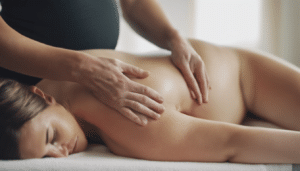Pregnancy brings various changes, often leading to discomfort and stress for expectant mothers. Effective relief can be found in expert prenatal massages, offering a sanctuary of relaxation and pain relief when executed precisely and with care. Critical approaches, such as the soothing strokes of Swedish massage and the targeted relief of Shiatsu pressure points, cater to the unique needs of pregnant women.
However, using these methods requires a nuanced understanding of the pregnant body’s intricacies and the subtle shifts that can influence both mother’s and child’s well-being. As we explore these techniques, it becomes evident how essential it is for practitioners to navigate them with care and expertise, providing a soothing experience for mothers-to-be.
Key Takeaways
- Swedish massage uses gentle techniques like effleurage to relax and cater to expectant mothers’ needs.
- Safety in prenatal massage involves light touch and pressure adjustments for comfort.
- Specialized techniques, including reflexology, target pregnancy discomforts and promote well-being.
- Side-lying positions and appropriate aromatherapy enhance the massage experience for pregnant women.
Swedish Massage Basics
Swedish massage, a cornerstone of therapeutic touch, offers expectant mothers a nurturing way to alleviate pregnancy’s physical discomforts and emotional stresses through its gentle yet effective techniques. This massage style is renowned for its soothing, long, gliding strokes known as effleurage, promoting a deep sense of relaxation and improving circulation. Such enhancements in blood flow are particularly beneficial during pregnancy, as they can help reduce the swelling often experienced in the legs and feet.
In addition to effleurage, Swedish massage incorporates a variety of methods designed to address the unique needs of a pregnant mother’s changing body. This massage can significantly contribute to a healthier pregnancy by improving overall circulation and promoting relaxation. The gentle nature of Swedish massage also makes it a safe choice for many, providing peace of mind to those who partake.
Understanding the profound impact of stress and muscle soreness during pregnancy, Swedish massage stands out as a supportive ally. It offers a sanctuary where expectant mothers can find relief and tranquility, fostering a deep sense of belonging and care during this transformative period of life.
Gentle Kneading Techniques
Moving into gentle kneading techniques, it’s important to emphasize their significant benefits for expectant mothers, particularly in enhancing circulation and reducing muscle tension. Safety precautions are paramount, ensuring that these methods, such as petrissage, are applied with the utmost care to avoid undue stress on the mother and the developing baby. This approach not only aids in alleviating common pregnancy-related discomforts but also promotes a more profound sense of relaxation and well-being.
Benefits for Pregnancy
Gentle kneading techniques in prenatal massage offer significant benefits, including stress reduction, relaxation enhancement, and the alleviation of common pregnancy-related discomforts. By gently manipulating the muscles, these techniques help to relieve muscle tension, which can be a source of great comfort for expectant mothers managing the physical changes of pregnancy. The improved circulation from these massages can also address swelling and back pain, making daily activities more manageable.
Additionally, the mother’s emotional well-being is nurtured through the release of endorphins, fostering a serene environment for both mother and baby. This holistic approach supports better sleep, lowers stress hormones, and strengthens the precious bond between mother and child, illustrating the profound impact of gentle kneading techniques during this time.
Safety Precautions
While focusing on the well-being of both mother and child, adhering to specific safety precautions when employing gentle kneading techniques in prenatal massage is essential.
| Aspect | Importance | Emotion Evoked |
|---|---|---|
| Light Touch | Avoids discomfort or pressure on sensitive areas. | Comfort |
| Promoting Relaxation | It improves circulation and eases muscle tension. | Serenity |
| Adjusting Pressure | Guarantees safety and comfort during the session. | Trust |
These techniques guarantee a calming and soothing experience, relieving common pregnancy discomforts. Prenatal massage therapists are deeply committed to the safety and comfort of expectant mothers, making gentle kneading an ideal choice for those seeking the benefits of massage therapy without worry.
Deep Tissue Adaptations

Adapting deep tissue massage techniques for expectant mothers requires careful consideration to guarantee their safety and comfort throughout the pregnancy. Traditional deep tissue massage, known for its intensity and deep pressure, poses risks during pregnancy, such as triggering contractions or causing discomfort. It is essential to modify these techniques to ensure a nurturing and beneficial experience for both the mother and the developing baby.
To promote relaxation and alleviate muscle tension without overstimulation, consider the following adaptations:
- Utilize Gentle Techniques: Focus on soft techniques like effleurage and petrissage, which offer soothing strokes and light kneading to relax the muscles gently.
- Be Mindful of Pregnancy Hormones: Recognize that hormones like relaxin make tissues more pliable. Apply pressure cautiously to avoid overstretching or stressing the muscles.
- Open Communication: Always maintain open communication with your client to adjust the pressure per their comfort level, ensuring a safe and pleasant massage experience.
- Prioritize Safety: Above all, prioritize the well-being of the mother and baby by choosing massage techniques that are safe and specifically tailored to the prenatal stage.
Reflexology for Pregnancy
Reflexology, often sought out during pregnancy, presents a non-invasive approach that targets specific reflex points to facilitate relaxation and promote the body’s natural balance. This gentle method applies pressure to areas on the feet, hands, and ears, each correlating with different organs and systems within the body. For expectant mothers, this can mean a significant alleviation of common pregnancy discomforts, such as nausea, back pain, and edema, through the stimulation of the body’s healing capabilities.
As a safe and complementary therapy, reflexology supports overall well-being during this transformative period, helping reduce stress levels and fostering serenity and connection. Focusing on reflex points associated with the reproductive system may also aid in regulating hormonal shifts and preparing the body for labor and delivery.
Many women report experiencing profound physical and emotional benefits from reflexology sessions during pregnancy, finding them a soothing oasis contributing to a healthier prenatal period. It’s a practice that nurtures the body and provides a space for expectant mothers to connect with their changing bodies and their growing babies within a community that understands and supports their journey.
Shiatsu Pressure Points
In the domain of Shiatsu massage, understanding the precise locations and methods of stimulating pressure points is fundamental for expectant mothers seeking relief from pregnancy-related discomforts. Our focus on identifying effective points and providing technique application tips aims to empower women with knowledge that promotes relaxation, balance, and well-being throughout their pregnancy. This gentle yet powerful approach taps into the body’s natural healing mechanisms, offering a holistic path to managing common pregnancy challenges.
Identifying Effective Points
Understanding the role of Shiatsu pressure points in prenatal massage offers a pathway to alleviating common discomforts faced by expectant mothers during pregnancy. By focusing on specific areas, this technique promises relaxation and a journey toward a more comfortable and stress-free pregnancy.
- Shoulders: Easing tension in the shoulder region, providing relief from the burden of growing physical stress.
- Lower Back: Targeting this area helps manage back pain, offering a sense of reprieve.
- Hips: Gentle pressure can alleviate discomfort in the hips, supporting the body’s adjustments to pregnancy.
- Feet: Enhancing circulation and reducing swelling, creating moments of tranquility and rest.
When addressed by a knowledgeable and empathetic therapist, these key points can significantly enhance the well-being of expectant mothers, nurturing both body and spirit on this beautiful journey.
Technique Application Tips
Having highlighted the importance of identifying effective Shiatsu pressure points, we now focus on applying these techniques to guarantee expectant mothers receive the utmost benefit. Gentle pressure on specific meridians can greatly alleviate discomforts like nausea, back pain, and fatigue, fostering a sense of well-being. By carefully targeting these acupressure points, a practitioner can promote relaxation, improve circulation, and reduce stress, offering relief from common pregnancy symptoms, including headaches and swelling.
The balance of the body’s energy flow is vital; hence, proper training in applying the Shiatsu technique is essential. This ensures the massage is effective and safe for the mother and her developing baby, creating a nurturing and comforting experience.
Aromatherapy Massage Methods
Exploring the gentle art of aromatherapy massage, expectant mothers can experience a profound sense of relaxation and well-being through carefully selecting and applying essential oils. The harmonious blend of touch and scent is pivotal in enhancing the massage experience, offering a sanctuary of calm for both mother and unborn child. Utilizing essential oils like lavender, chamomile, and ylang-ylang, which are celebrated for their calming and soothing properties, aromatherapy massage becomes a deeply nurturing practice during pregnancy.
- Lavender Oil: Known for its stress-relieving and sleep-promoting benefits, it is ideal for expectant mothers facing insomnia or anxiety.
- Chamomile Oil: Offers anti-inflammatory properties that can help alleviate pregnancy-related discomforts, such as muscle tension and swelling.
- Ylang-Ylang Oil: Supports emotional balance, reducing feelings of stress and fostering a sense of peace.
- Safe Dilution: Essential oils are diluted in a carrier oil to guarantee a safe application on the skin, protecting both mother and baby.
Aromatherapy massage alleviates physical discomfort and significantly contributes to emotional well-being, reducing anxiety and enhancing sleep quality. Embracing this method provides a comforting, shared experience of serenity and connection, nurturing the bond between mother and child.
Side-Lying Position Techniques

Building on the foundation of enhancing prenatal well-being through aromatherapy massage, the side-lying position offers another layer of comfort and support for expectant mothers seeking relief from physical discomforts. This position alleviates pressure on the abdomen and back and fosters a nurturing environment where the soon-to-be mother can feel safe and cared for. Therapists use wedges or pillows to align the body correctly, enhancing the massage’s effectiveness and comfort.
The side-lying position opens up new possibilities for targeted relief. Therapists can easily access shoulders, hips, and legs, allowing them to address specific areas of tension and discomfort. This accessibility is critical for personalizing the massage experience to meet each expectant mother’s unique needs.
Gentle strokes and effleurage techniques are seamlessly integrated into this position, promoting relaxation and reducing muscle tension without compromising safety.
Ultimately, the side-lying position embodies a thoughtful approach to prenatal care. It acknowledges and accommodates pregnancy’s physical changes and challenges, offering a sanctuary of relief and relaxation. Through this position, therapists convey their deep understanding and empathy, creating a sense of belonging and care that nurtures both mother and child.
Frequently Asked Questions
What Are Expert Prenatal Massages?
Expert prenatal massages predominantly feature effleurage, employing gentle, gliding strokes that foster a sense of belonging and well-being while effectively alleviating tension and enhancing circulation.
What Is the Most Common Massage Technique Used During Pregnancy Massage?
Effleurage emerges as the most common technique in pregnancy massage, offering gentle, gliding strokes that foster a feeling of belonging and well-being. It’s known for its ability to alleviate tension and enhance circulation.
What Are the Moves for Prenatal Massage?
Prenatal massage incorporates gentle effleurage strokes, petrissage techniques for muscle tension relief, figure-eight motions for deeper pressure, and circular movements on shoulders and arms, all performed in a side-lying position to guarantee comfort and safety.
What Are the Massage Techniques for Labor?
Massage techniques for labor incorporate gentle touch, effleurage strokes, and slow rhythmic movements to foster relaxation and pain relief. Counter-pressure on the lower back, hips, and sacrum can significantly reduce discomfort during contractions.
What Is Expectant Mother Massage?
Expectant mother massage is a nurturing oasis, a gentle journey tailored for pregnant women. It soothes discomforts and fosters a deep sense of belonging, using methods steeped in empathy and expertise to enhance well-being.
Conclusion
Expectant mothers navigate a transformative journey marked by changes and stress in their bodies. Seeking relief, licensed massage therapists employ specialized techniques like Swedish and deep tissue massages, addressing muscle tension, anxiety, and depression. These massages enhance blood flow, reducing complications in high-risk pregnancies.
Careful attention to side-lying positions ensures a safe and comfortable experience, minimizing the risk of blood clots. The benefits extend beyond pregnancy, decreasing postpartum complications and depression and fostering both physical and mental well-being. Under the skilled hands of a qualified therapist, prenatal massage becomes a therapeutic journey offering solace and tranquility during the transformative period of motherhood.
In the grand tapestry of prenatal care, the art of massage stands as a beacon of solace, blending ancient wisdom with modern adaptations. From the gentle whispers of Swedish strokes to the strategic comfort of side-lying positions, massage therapy cradles both body and soul. It remains a steadfast companion on the path to motherhood, providing a tender reprieve from the delightful yet arduous pregnancy journey.
Prenatal massage, with its myriad benefits and comprehensive coverage, plays a crucial role in maintaining the health of pregnant women. As an effective and safe practice endorsed by experts like the American Pregnancy Association, it contributes to reduced levels of anxiety, leg pain, and cortisol. By prioritizing the well-being of pregnant bodies, qualified therapists create an environment that promotes a sense of belonging, relieving stress and enhancing the overall prenatal experience.

